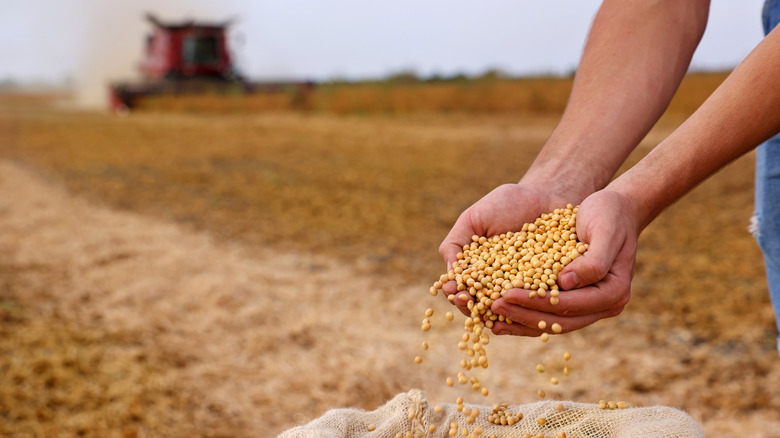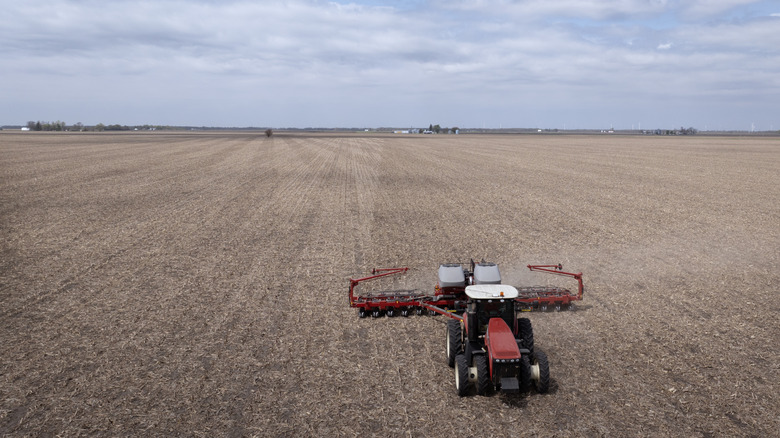This Is America's Most Valuable Food Export
Agriculture is an integral part of the American economy that is responsible for 10% of the country's exports. In 2024, that percentage came out to $176 billion! While the market is made up of numerous products that include anything from animal feed to dairy, meat, and alcohol, there is one crop that currently rules the game: soybeans. Grains and feed as a whole make up the largest share of the market but if we look at single products, soybeans come out on top. According to the USDA's Foreign Agricultural Service, the legume brought in $24.5 billion last year, with 52.21 million metric tons exported.
Unsurprisingly, China is our biggest buyer, shelling out $12.64 billion for American-grown soybeans. In comparison, the European Union (the second-largest importer) bought only $2.45 billion worth of the crop. Soybeans are used in many traditional Chinese recipes, so the country can't meet its own demand for the product and has to turn to exporters like the U.S. and Brazil. Because the U.S. grows so much of this crop, soybeans aren't one of the foods that tariffs will likely affect the most. That said, the industry relies heavily on exporting a large share of its soybeans to China and if the country decides to turn to other suppliers, American farmers might face lower profits.
As for soybean's competitors, corn and beef come in as the country's second and third largest food exports. The products hold 7.9% and 5.9% share of the market, earning $13.92 billion and $10.45 billion, respectively.
How did soybeans become so important in the U.S.?
What makes the soybean story so interesting is that the crop only gained importance in the U.S. within the last century. China domesticated the legume around 1100 B.C.E, but it would take until the 1760s before its seeds reached U.S. soil by way of Samuel Bowen. A British man who'd been imprisoned in China, Bowen snuck some seeds out of the country and planted them in Georgia. Benjamin Franklin himself would also send some soybean seeds back home a decade later. Little by little, farmers began experimenting with the crop, and Asian immigrants grew it and sold its derivatives in specialized stores. The U.S. government became more interested in understanding the plant's potential in the early 20th century. It sent a man named Frank Meyer on an expedition to gather different varieties of soybean seeds and other plants from China.
Eventually, prominent figures like Henry T. Ford invested in the crop, believing it could be used in things like cars and clothes (interestingly, soybeans are still being studied for their potential to replace plastic). The crop also gained popularity for its ability to replenish the soil with nutrients that corn and cotton deplete. In this way, it became a companion to legacy American crops. Globalization and a more diverse population have helped soybeans continue to gain popularity, especially as ingredients like soy sauce become integrated into foods like gravy or increasingly used at home and in restaurants.

